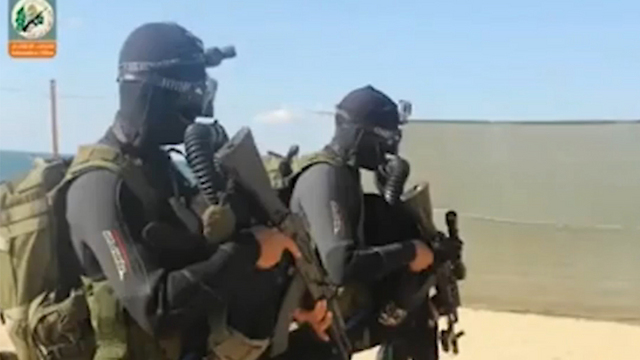The upgrade has not gone without notice by the IDF. In recent months, Israeli naval forces have recorded several incidents in which sailors deployed underwater hand grenades after suspicions of Hamas divers approaching ships were raised.
Several of the instances occurred in the maritime zone between the northern Gaza Strip and Zikim Beach.
In addition to frequent diving training along Gaza's coast, Hamas has begun producing its own diving systems in light of tunnel closures along the Egyptian border. The closed breathing system allows divers to remain underwater for several kilometers, while maintaining a low signature and few identifying signs.
As soon as Hamas divers are suspected, the navy's 916th division—the division responsible for the southern maritime zone—uses a variety of lethal countermeasures, including specialized anti-personnel underwater grenades and depth charges with large kill zones.
In addition to lethal countermeasures, the IDF has also deployed several specialized underwater detection systems along the coast.
According to a senior naval officer, "The progress of the Hamas commando unit is exponential and nonlinear, but we have a large target bank against them and we know how to destroy their coastal infrastructure if need be."
The IDF has also begun to upgrade the defensive systems of surface vessels in light of the new unconventional threats.
Many in the defense establishment believe that in the next round of armed conflict with Hamas or Hezbollah, terrorist forces will utilize Kornet missiles against smaller and mid-sized ships.
As a result, the navy has begun to deploy several defensive systems such as the "Rubicon" and the "Marine Windbreaker," which both function in the same manner as the "Trophy" active protection system. The systems are designed to intercept and destroy incoming missiles and rockets.
(Translated and edited by Fred Goldberg)




















